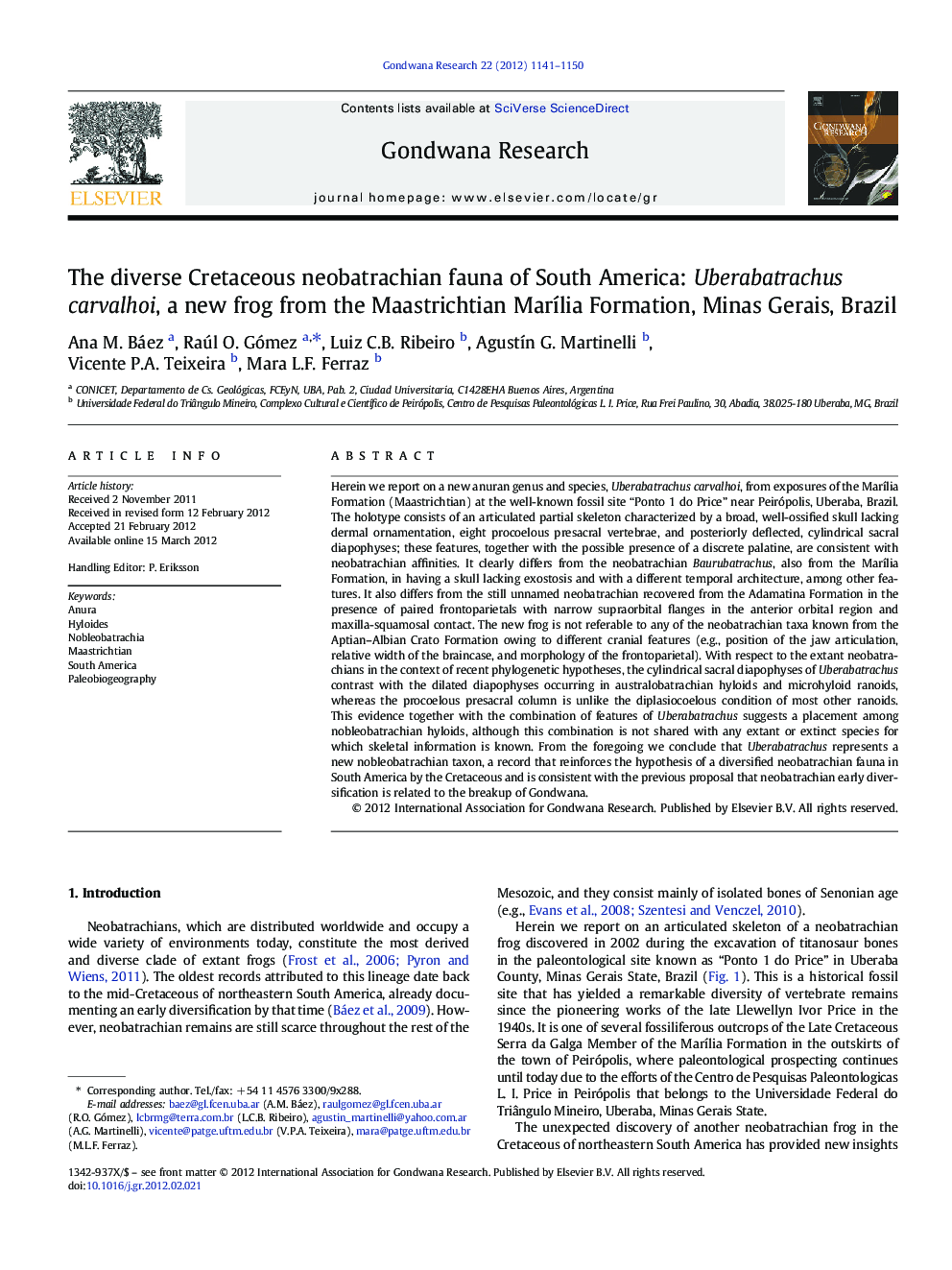| Article ID | Journal | Published Year | Pages | File Type |
|---|---|---|---|---|
| 4727020 | Gondwana Research | 2012 | 10 Pages |
Herein we report on a new anuran genus and species, Uberabatrachus carvalhoi, from exposures of the Marília Formation (Maastrichtian) at the well-known fossil site “Ponto 1 do Price” near Peirópolis, Uberaba, Brazil. The holotype consists of an articulated partial skeleton characterized by a broad, well-ossified skull lacking dermal ornamentation, eight procoelous presacral vertebrae, and posteriorly deflected, cylindrical sacral diapophyses; these features, together with the possible presence of a discrete palatine, are consistent with neobatrachian affinities. It clearly differs from the neobatrachian Baurubatrachus, also from the Marília Formation, in having a skull lacking exostosis and with a different temporal architecture, among other features. It also differs from the still unnamed neobatrachian recovered from the Adamatina Formation in the presence of paired frontoparietals with narrow supraorbital flanges in the anterior orbital region and maxilla-squamosal contact. The new frog is not referable to any of the neobatrachian taxa known from the Aptian–Albian Crato Formation owing to different cranial features (e.g., position of the jaw articulation, relative width of the braincase, and morphology of the frontoparietal). With respect to the extant neobatrachians in the context of recent phylogenetic hypotheses, the cylindrical sacral diapophyses of Uberabatrachus contrast with the dilated diapophyses occurring in australobatrachian hyloids and microhyloid ranoids, whereas the procoelous presacral column is unlike the diplasiocoelous condition of most other ranoids. This evidence together with the combination of features of Uberabatrachus suggests a placement among nobleobatrachian hyloids, although this combination is not shared with any extant or extinct species for which skeletal information is known. From the foregoing we conclude that Uberabatrachus represents a new nobleobatrachian taxon, a record that reinforces the hypothesis of a diversified neobatrachian fauna in South America by the Cretaceous and is consistent with the previous proposal that neobatrachian early diversification is related to the breakup of Gondwana.
Graphical abstractFigure optionsDownload full-size imageDownload as PowerPoint slideHighlights► Uberabatrachus carvalhoi is a new Cretaceous hyloid neobatrachian frog from Brazil. ► Hyloids were a major component of South American anurans already in the Cretaceous. ► Late Cretaceous hyloids show provincialism in northern and southern South America.
